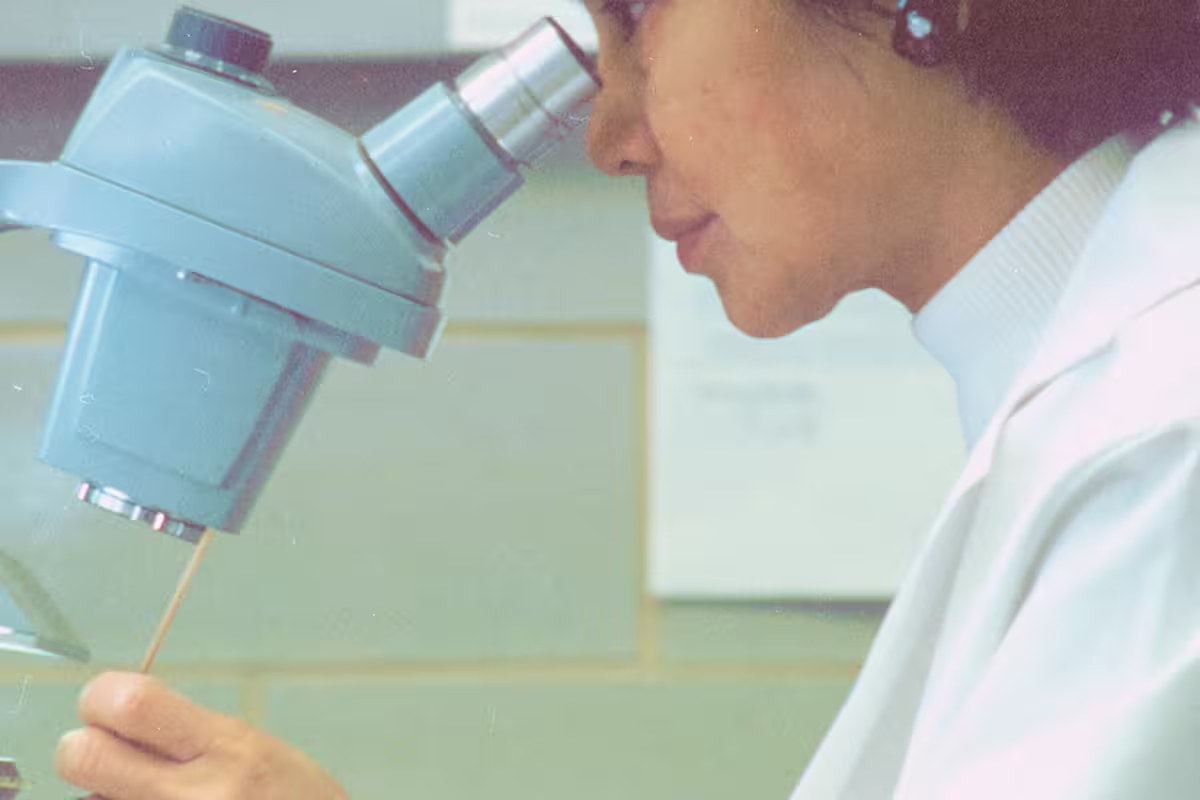

Cytolytic Vaginosis Explained: Signs, Causes, and How to Stop It
Discover key details about Cytolytic Vaginosis (CV), including symptoms, causes, and management strategies for this condition.
Words by Olivia Cassano
Scientifically edited by Dr. Krystal Thomas-White, PhD
Medically reviewed by Dr. Sabrina Sahni, MD NCMP
Cytolytic vaginosis (CV) — aka Lactobacillus overgrowth syndrome or Doderlein’s cytolysis — is a condition that occurs when typically protective bacteria (called Lactobacilli) over-multiply in your vaginal microbiome and cause vaginal discomfort.
Cytolytic vaginosis was only discovered fairly recently, (we’re talking 1991). Frustratingly, it’s often confused with other vaginal conditions, such as bacterial vaginosis (BV) or yeast infections because it can cause similar symptoms — including abnormal vaginal discharge, itchiness, and vaginal pain. This means it’s also often misdiagnosed (particularly when people self-diagnose).
That’s why we’ve compiled everything you should know about cytolytic vaginosis, from causes to testing to treatment. Read on to learn more.
What causes cytolytic vaginosis?
Typically, an optimal vaginal environment is dominated by protective bacteria such as Lactobacilli. The lactic acid produced by these bacteria helps maintain a low vaginal pH (between 3.8-4.5), which keeps pathogens (like Gardnerella and E. coli) at bay and can prevent unwanted infections.
However, in some cases, these Lactobacilli can overgrow. This triggers a process known as lysis, which simply means the breaking down of the vaginal epithelial cells which line the vaginal wall. This irritation can cause a host of symptoms like itching and abnormal discharge. If you’re into etymology, ‘lysis’ is where the name “cytolytic vaginosis” comes from.
In short, cytolytic vaginosis happens when typically protective Lactobacilli overgrow and irritate the vaginal epithelium.
What are the risk factors for cytolytic vaginosis?
There are a few risk factors that can make you more likely to develop cytolytic vaginosis.
Hormonal changes
Cytolytic vaginosis mainly affects women of reproductive age and is thought to occur most frequently when estrogen levels are high, such as when taking hormone replacement therapy (HRT), experiencing a hormonal imbalance, or during pregnancy.
Additionally, some research suggests it may be more common during the luteal phase of the menstrual cycle, aka the days after ovulation but before your period.
Diabetes
People with diabetes (both Type 1 and Type 2) are also thought to be at slightly greater risk of developing cytolytic vaginosis, as studies have shown the bacteria responsible for the condition are potentially more abundant in women with high blood sugar levels.
Taking probiotics
The risk for cytolytic vaginosis can also increase with behaviors that replenish Lactobacilli, such as taking probiotics that contain these bacteria or overdoing other vaginal health regimens that are meant to support the growth of these bacteria.
That’s why it’s so important to test your vaginal microbiome before taking any supplements, even something as simple as a pro or prebiotic. There can be too much of a good thing!
What are the symptoms of cytolytic vaginosis?
Cytolytic vaginosis irritates the vaginal walls which can lead to uncomfortable and unpleasant symptoms. Symptoms of cytolytic vaginosis include:
- Excessive or increased vaginal discharge, most often white and watery or cottage-cheese-like in consistency and appearance (similar to a yeast infection)
- Discomfort or pain during sexual intercourse
- Itching or burning of the vagina and/or vulva
- Pain or discomfort when peeing.
Cytolytic vaginosis symptoms often resemble those of other vaginal infections, which can sometimes lead to repeat misdiagnoses and failed treatments.
You may want to talk to your doctor about cytolytic vaginosis if you experience any of these symptoms but haven’t been diagnosed with a yeast infection, or your symptoms aren’t going away after using an antifungal treatment — this can be a key indicator that there’s something else going on.

Recurrent symptoms? Get Evvy's at-home vaginal microbiome test, designed by leading OB-GYNs.
How to test for cytolytic vaginosis
Unfortunately, cytolytic vaginosis is often a diagnosis of exclusion, meaning that it often requires a process of elimination of other conditions that can cause similar symptoms, like a yeast infection. We know this is frustrating — it is something we hope to change with our research!
The good news is that diagnosis can be confirmed by looking at a vaginal smear under a microscope (using a method called microscopy) in the doctor's office.
Additionally, while cytolytic vaginosis isn't well studied, it is thought to be an uncommon condition. While it might be comforting to have a potential diagnosis to point to for your symptoms, make sure not to self-diagnose and talk to your doctor before using any treatments designed for cytolytic vaginosis.
One benefit of the Evvy Vaginal Health test is that it can tell you what proportion of your vaginal microbiome is Lactobacilli, so you and your doctor can figure out if cytolytic vaginosis may be contributing to your symptoms.
While the Evvy test cannot confirm a cytolytic vaginosis diagnosis (you need a microscope to do that), it can help to determine the abundance of Lactobacilli compared to other bacteria, as well as eliminate other potential causes of your symptoms.
Cytolytic vaginosis treatment options
Like many vaginal health conditions, there is still so much that we don’t know about cytolytic vaginosis — another motivator for closing the gender health gap!
Baking soda baths
While cytolytic vaginosis isn’t a commonly diagnosed infection, there is one standard treatment for it: sodium bicarbonate (baking soda) bath. The baking soda helps by decreasing Lactobacilli levels and research demonstrates it is effective in decreasing symptoms in individuals with cytolytic vaginosis.
But before you start running the water and lighting candles, it’s extremely important to note that this treatment can negatively impact the vaginal microbiome (since it is designed to reduce Lactobacilli levels) and isn’t recommended unless you have been diagnosed with cytolytic vaginosis because it may increase your risk for bacterial vaginosis or aerobic vaginitis (AV).
Avoiding probiotics
If you think you have cytolytic vaginosis, you may want to stop taking any Lactobacillus-containing probiotics, since the point of probiotics is to increase Lactobacilli and the solution for cytolytic vaginosis is to reduce Lactobacilli.
Regular probiotic usage can often make symptoms of cytolytic vaginosis worse. If you are diagnosed with cytolytic vaginosis and are using probiotics — either for your vaginal or gut health — you may want to take a hiatus and see if your symptoms lessen.
Reconsider treatments
Finally, you may also want to consider avoiding products that lower the vaginal pH or support Lactobacillus strains in the vaginal microbiome — such as boric acid, vitamin C, or "pH balancing" products. These may exacerbate symptoms of cytolytic vaginosis.
Make sure to consult with your doctor before attempting any of the above treatments. Given the lack of research, knowledge, and training on cytolytic vaginosis in the medical community, we suggest you specifically seek a vaginitis specialist who is familiar with cytolytic vaginosis and can help guide you on the best way to diagnose and treat it.
Can I prevent cytolytic vaginosis?
Although there are no proven ways to prevent cytolytic vaginosis, there are a few behaviors you may want to consider if you’ve been diagnosed with it:
- Consider avoiding probiotics, products with Lactobacillus bacteria, and treatments that lower your vaginal pH unless you know you have low Lactobacilli levels
- Maintain balanced estrogen levels
- Keep blood sugar under control.
As mentioned, a few of the recommended treatments and behaviors for cytolytic vaginosis are the exact opposite of what to do to keep your vaginal microbiome in good shape. That’s why it’s so important to have a solid understanding of your own microbial composition before jumping to action — otherwise, you risk using the wrong treatment for your needs. To learn more about exactly what’s up down there, try the Evvy Vaginal Health Test for yourself.
FAQ
How common is cytolytic vaginosis?
Cytolytic vaginosis is pretty uncommon, but it’s something to be aware of, especially since its symptoms — like itching, abnormal vaginal discharge, and irritation — can easily be confused with a yeast infection or bacterial vaginosis. While estimates on how many women it affects vary, some doctors suggest it could impact a small percentage of women of reproductive age, particularly those with higher levels of Lactobacilli. This condition happens when these normally helpful bacteria grow a bit too much. Since cytolytic vaginosis isn't as widely recognized and is often mistaken for other infections, it can be tricky to figure out exactly how prevalent it is. For example, in a study of 210 women dealing with vaginal discharge and other symptoms of vaginal candidiasis, 15 were diagnosed with cytolytic vaginosis.
How is cytolytic vaginosis diagnosed?
Women dealing with cytolytic vaginosis often find themselves misdiagnosed with recurring yeast infections or bacterial vaginosis because the symptoms can be similar. Traditional tests for infections might not pick up the overgrowth of Lactobacilli that causes cytolytic vaginosis. Unfortunately, diagnosing cytolytic vaginosis can sometimes be tricky — it often involves ruling out other possible conditions, like yeast infections, which can be a bit of a process. Typically, a healthcare provider will need to take a closer look at vaginal secretions under a microscope for an accurate diagnosis.
What is the best treatment for CV?
When it comes to treating cytolytic vaginosis, the goal is to balance out the acidity in the vaginal environment (make the vaginal pH less acidic), which can help manage the overgrowth of Lactobacilli. One popular home remedy is taking a baking soda bath. Some people also find relief using baking soda-filled gelatin capsules as vaginal suppositories for a more targeted approach. Make sure to speak to your healthcare provider before trying any treatments for cytolytic vaginosis.





